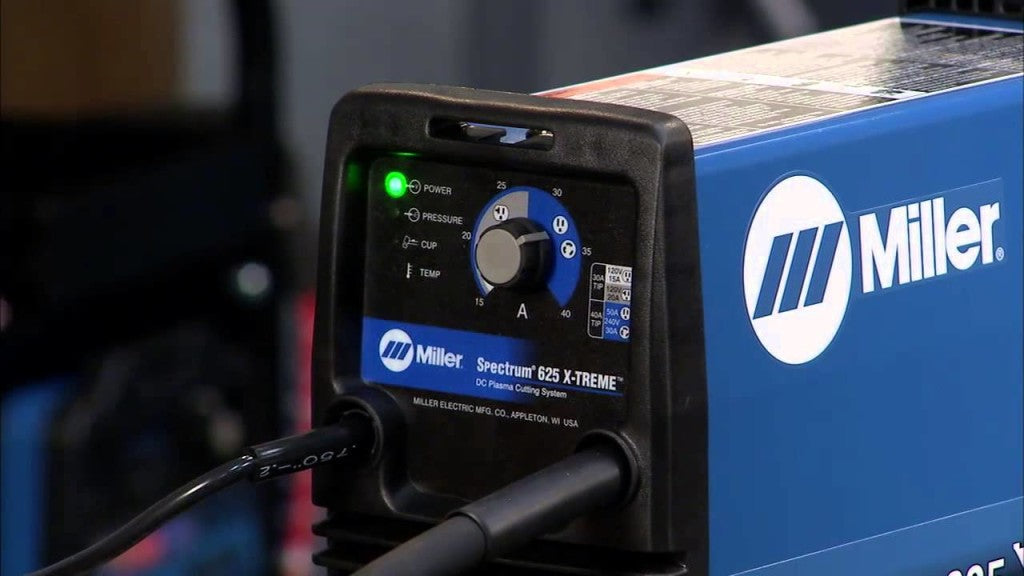Remember in the old days when Sears advertised their Craftsman Tools as the “the right tools for the job!” A typical marketing ploy for sure (not that Craftsman didn’t make some great tools), but Sears’ stand out tagline illustrates a great point about the importance of having the right tools to complete a particular job.
Getting a job done is so much easier when you have the right tools. Trying to make do with tools that are less than optimal for a particular task is never any fun. And some projects are simply impossible without the right tools, period—end of story.
Selecting the right Plasma Cutting Tools is a perfect illustration of this important point. Cutting tools are not cheap, but they’re an important part of your welding equipment arsenal, so you need to make sure you weight all of your options before you make your selection, to ensure you acquire the cutting tool ideal suited to your specific needs.
Project Requirements (cutting on a table or by hand)
To match the right tool with a particular project, you need to be clear about your project requirements. In the Plasma Cutting realm, it boils down to whether you’re going to be cutting on table or by hand. Some plasma cutting tools are capable of covering both options, but many are designed for one purpose or the other.
If you plan to use a table most of the time, or if don’t have a table and know you’ll always be cutting by hand, then a plasma cutting torch specifically designed for either table or hand use is your best choice. On the other hand, if you’re working on projects that may require both table and hand cutting, then a dual-purpose machine is your best bet. It often comes down to price, as the overall cost of a particular plasma cutting torch can vary based on intended use.
Top 6 Essentials Elements for Selecting Your Ideal Plasma Cutting Tool
Once you’ve determined the type of Plasma Cutting Tool (table or hand), it’s time to jump into breaking down the key components of your best option. The following is a list of the 6 essential elements you should keep in mind as you make your plasma cutting tool selection:
1. Cutting Capacity
Cutting capacity refers to the thickness of the material you’re going to cut. This is kind of a tricky element to plan for, because you’re probably not going to cutting the same thickness of material all the time. There is, however, a rule of thumb that says you should aim for whatever material you’re planning to cut 80% of the time. If you generally work with.5” thick metal, you should go for a .5” cutting system. And the good news is, even if you occasionally cut something a little thicker (oh like .75” thick metal) or if you cut metal that’s thinner, you’re still covered
2. Cut Quality
Cut quality affects the look of your finished materials. The sharper and cleaner you cut quality, the less time you’ll spend cleaning up your base metal to make everything look pretty. Therefore, you want a cutting tool that creates clean, smooth edges, that don’t require a great deal of additional clean up after the fact to make things look presentable.
Additionally, cut quality determines the precision of your cuts. The “sharper” the cutting tool, the narrower the kerf (aka the cut width), the less metal you end up wasting in the cutting process.
3. Reliability
Obviously reliability is key, because there’s nothing worse than having an important piece of gear break down on you at a critical moment. Generally speaking, the best engineered cutting tools include the least amount of moving parts, because they have fewer components that can actually break down. You want something well tested, with a great performance record, on-board software (less moving parts), and a centralized cooling system to help preserve the cutting tools heat sensitive internal components.
4. Duty Cycle
Duty cycle is related to reliability, and literally refers the amount of use a machine is designed to endure. So the higher the duty cycle rating on a particular cutting tool, the longer the machine will last, even with high volume usage.
5. Ease of Use
If you’re a seasoned welding pro, ease of use is not an issue. If you’re a new or beginning welder, however, ease of use is very important, as you certainly don’t want to purchase a plasma cutting tool that requires a degree in mechanical engineering just to turn the thing on. On the other side of the coin, the less complicated the machine is to use, the less likely it will meet the other critical criteria outlined above for your ideal plasma cutting tool.
Additionally, portability is also an important issue to keep in mind. If you’re planning to work in the field, or in multiple locations (even within your own workshop), a cutting tool capable of running off of a generator is the ticket for you.
6. Operating Cost
The plasma consumption rate varies from machine to machine, but ideally you want a machine that strives to lengthen the plasma consumption rate as long as possible, to reduce replacement costs and minimize change over time.
